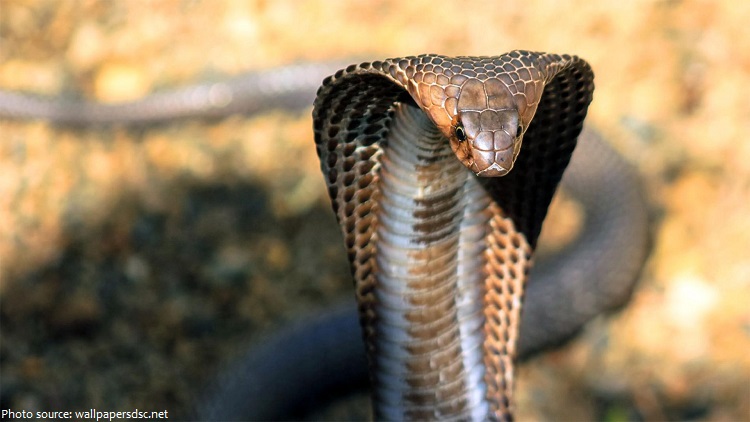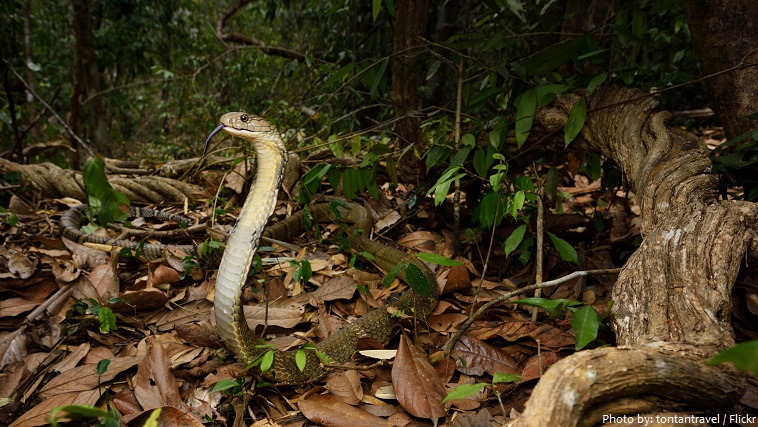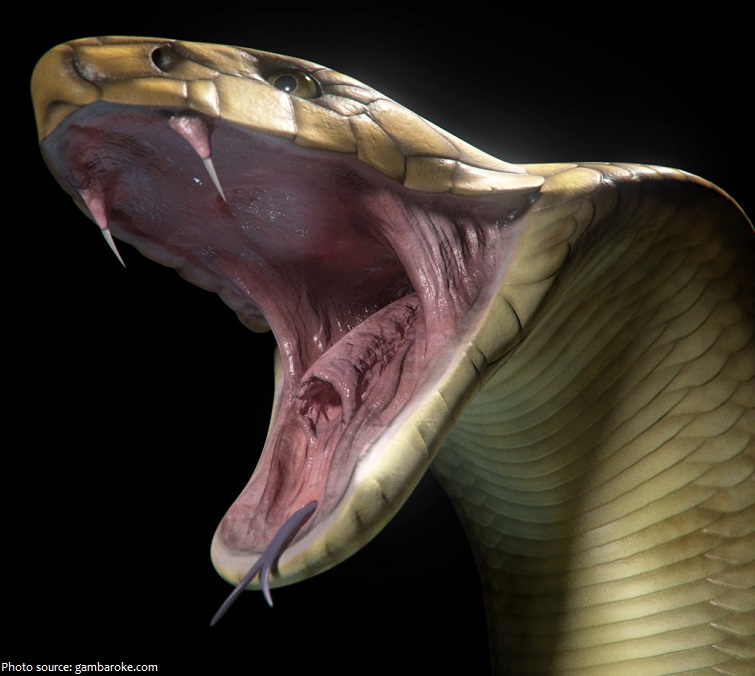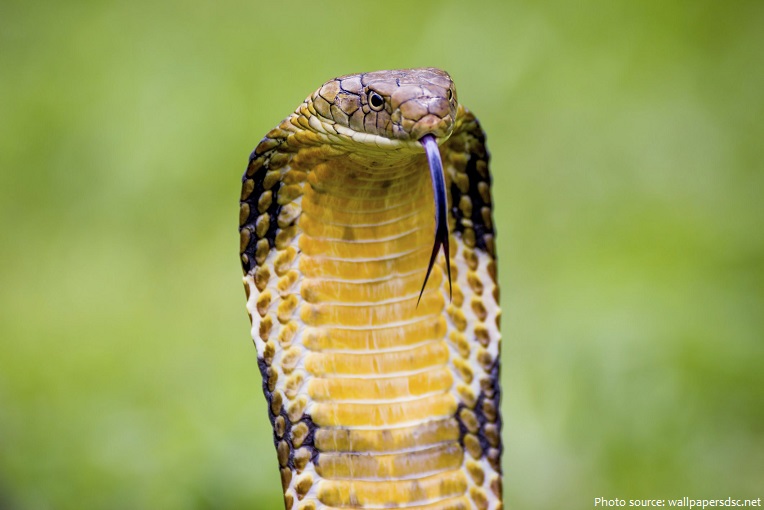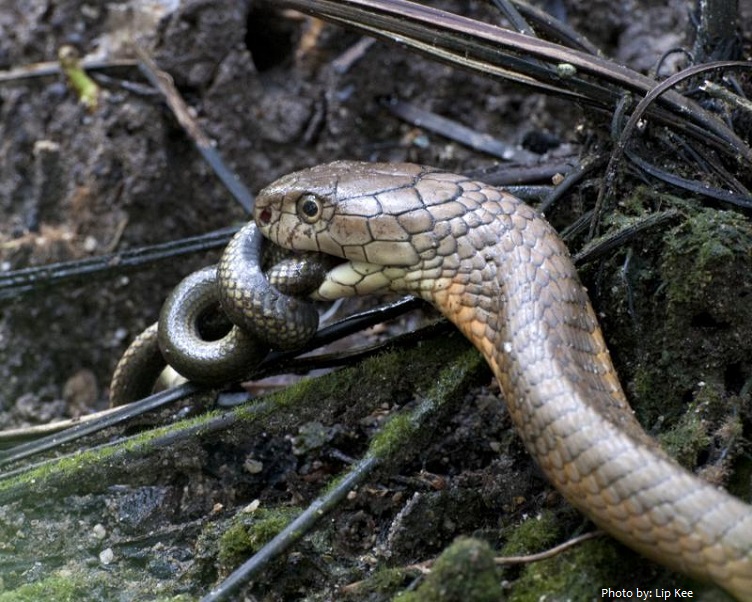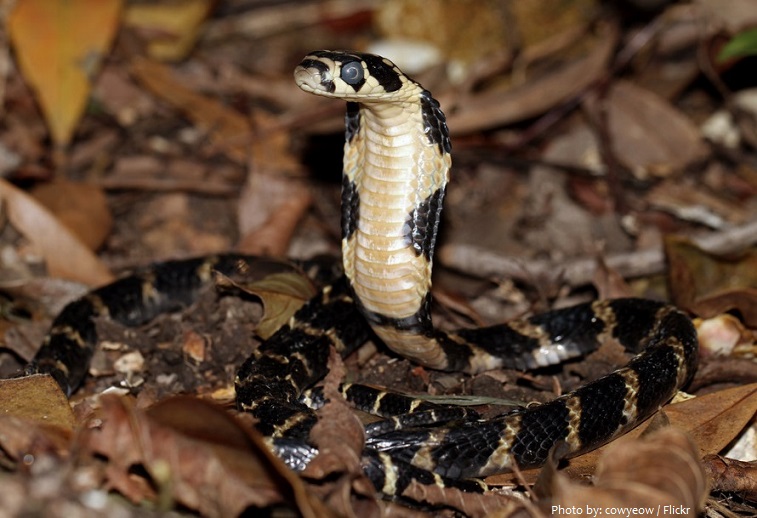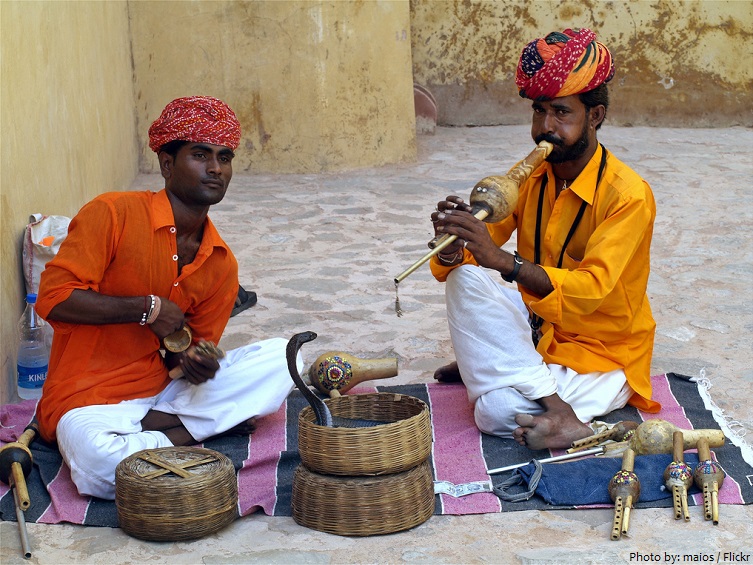King cobras (Ophiophagus hannah) are the longest venomous snakes in the world.
They live in South and Southeast Asia, particularly India, China, Bangladesh, Myanmar, Cambodia, Laos, Nepal, Bhutan, Thailand, Vietnam, Malaysia, Indonesia, Singapore and the Philippines.
King cobras mainly live in dense highland forests, preferring areas dotted with lakes and streams. They may also be found in mangrove, swamps, paddy fields, corn fields and even human settlements.
The average lifespan of a king cobra in the wild is about 20 years.
The king cobra averages at 3 to 4 m (9.8 to 13.1 ft) in length and typically weighs about 6 kg (13 lb). Males are larger than females, which is an unusual trait among snakes whose females are usually larger than males.
The longest known specimen was kept captive at the London Zoo, and grew to around 5.6 to 5.7 m (18.5 to 18.8 ft) before being euthanised upon the outbreak of World War II.
The skin of this snake is either olive-green, tan, or black, and it has faint, pale yellow cross bands down the length of the body. The belly is cream or pale yellow, and the scales are smooth.
The head of a mature snake can be quite massive and bulky in appearance, though like all snakes, it can expand its jaws to swallow large prey items.
The king cobra’s deadly fangs are only 8 to 10 millimeters (0.3 to 0.4 inch) long. Because they are fixed to the upper jaw, they have to be short. If they were longer, they would penetrate the floor of its mouth. Angled back into the snake’s mouth, the fangs help push the prey on its path to the stomach.
Like other cobras they have specialized muscles and ribs in the neck that can flare out when it feels threatened. They are able to raise their body up, spread the hood, and hiss loudly to scare off most threats.
King cobras can be distinguished from other cobras by size and hood. King cobras are generally larger than other cobras, and the stripe on the neck is a chevron instead of a double or single eye shape that may be seen in most of the other Asian cobras. Moreover, the hood of the king cobra is narrower and longer.
The king cobra has 11 large scales (other cobras have 9) on his head which resemble a King’s crown, hence his majestic name.
If it feels threatened, the king cobra flares its hood, makes a growling hiss, and rears itself up.
The hiss of the king cobra is a much lower pitch than many other snakes and many people thus liken its call to a “growl” rather than a hiss. A growling hiss works much the same way as the rattle of the rattlesnake works: it is a warning sign that can be heard at a safe distance. It is produced by tiny holes in the trachea and is resonated by the lung.
The venom of the king cobra consists primarily of neurotoxins, with several other compounds. Though there are other snakes with more potent venom, the amount of neurotoxin that a king cobra can emit in one bite is enough to kill 20 people or one elephant.
Despite their large sizes, king cobras are fast and agile.
The king cobra is an active hunter and is active during the day (diurnal).
Its eyesight is better than most snakes. It’s good enough to see a moving person almost 100 meters (330 feet) away.
King cobras are carnivorous snakes and feed on other snakes (even venomous ones!), lizards, frogs and small mammals. They also eat a variety of birds, eggs, fish and chickens stolen from poultry farms.
After a large meal, the snake may live for many months without another one because of its slow metabolic rate.
King cobras are the only snakes in the world that build a nest for their young. They can have between 20 to 40 eggs in a nest and the female guards the eggs faithfully, which can take 60 to 90 days to hatch. When the eggs start to hatch, instinct causes the female to leave the nest and find prey to eat so she does not eat her young.
The baby king cobras, with an average length of 45 to 55 cm (18 to 22 in), have venom which is as potent as that of the adults. They may be brightly marked, but these colours often fade as they mature.
The species is classified as Vulnerable by the IUCN due to pressure from harvesting for meat, skin and use in traditional medicine, and because of increasing loss of habitat to deforestation.
As large and highly venomous snakes, king cobras have very few natural predators. Mongooses are able to hunt and kill these snakes, and they sometimes get picked off by large birds of prey.
The king cobra despite the word “cobra” in its common name, is not a member of the Naja genus (the “true cobras”); instead belongs to a unique genus Ophiophagus, whose scientific name derives from the Greek for “snake-eating”, in reference to its dietary habit.
King cobras may be best known as the species of choice for the snake charmers of South Asia.
King cobras are shy and will avoid humans whenever possible, but they are fiercely aggressive when
cornered.
Snakebites from this species are rare, and most victims are snake handlers.
Nāga is the Sanskrit and Pali word for a deity or class of entity or being taking the form of a very great snake, specifically the king cobra, found in the Indian religions of Hinduism, Buddhism and Jainism.
In India people believe that the King Cobra has an exceptional memory. According to a myth, the picture of the killer of a king cobra stays in the eyes of the snake, which is later picked up by the partner and is used to hunt down the killer for revenge. Because of this myth, whenever a cobra is killed, especially in India, the head is either crushed or burned to damage the eyes completely.
Another myth claims that only 100 people may cast eyes on a king cobra; any more and it will die. It says that only king cobras who are ready to pass on to the next life will enter settlements so they can be viewed by more than 100.
In some traditions, a kiss to the king cobra’s head is thought to bring plentiful harvests and fertility to the woman who delivers the embrace.
